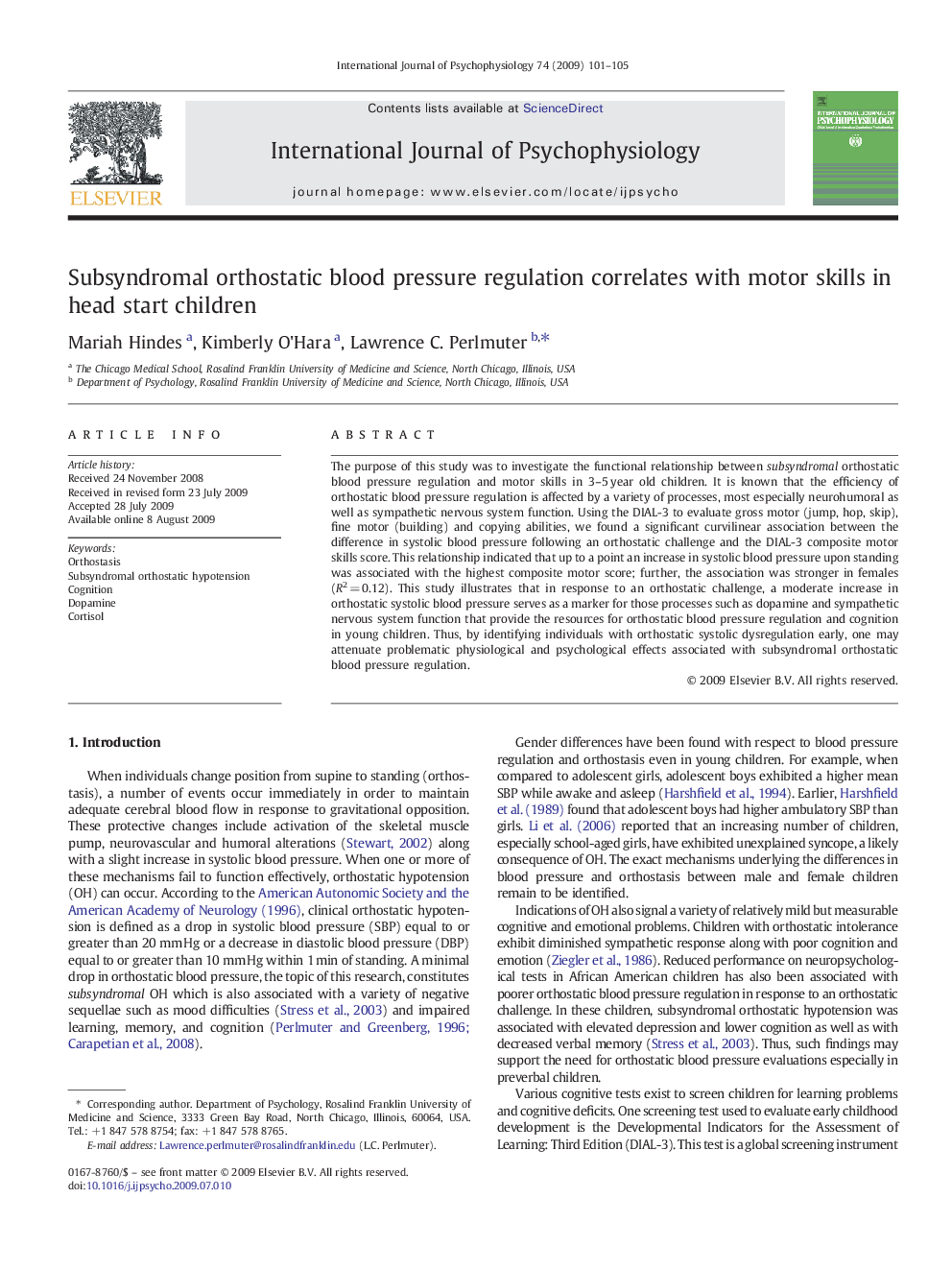| Article ID | Journal | Published Year | Pages | File Type |
|---|---|---|---|---|
| 930920 | International Journal of Psychophysiology | 2009 | 5 Pages |
The purpose of this study was to investigate the functional relationship between subsyndromal orthostatic blood pressure regulation and motor skills in 3–5 year old children. It is known that the efficiency of orthostatic blood pressure regulation is affected by a variety of processes, most especially neurohumoral as well as sympathetic nervous system function. Using the DIAL-3 to evaluate gross motor (jump, hop, skip), fine motor (building) and copying abilities, we found a significant curvilinear association between the difference in systolic blood pressure following an orthostatic challenge and the DIAL-3 composite motor skills score. This relationship indicated that up to a point an increase in systolic blood pressure upon standing was associated with the highest composite motor score; further, the association was stronger in females (R2 = 0.12). This study illustrates that in response to an orthostatic challenge, a moderate increase in orthostatic systolic blood pressure serves as a marker for those processes such as dopamine and sympathetic nervous system function that provide the resources for orthostatic blood pressure regulation and cognition in young children. Thus, by identifying individuals with orthostatic systolic dysregulation early, one may attenuate problematic physiological and psychological effects associated with subsyndromal orthostatic blood pressure regulation.
